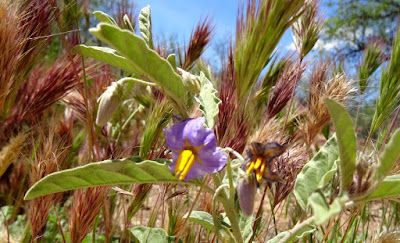Just a few miles from the Krazy K campground was Montezuma Castle National Monument. A beautiful example of cliffside architecture built by Sinagua farmers between 1100 and 1300. Early settlers assumed it was Aztec (because they had a fascination with all things Aztec at the time) hence the name.
Built in a cliff recess 100 feet above the canyon floor, this five-story, 20 room dwelling is one of the best-preserved structures in the Southwest.
The Arizona Sycamore (more disease resistant than the California Sycamore) can grow 75 to 100 feet tall with a similar spread. The trunk may be as much as 10 feet in diameter.
Sycamores have strong wood, but as the tree ages, a fungus attacks and consumes the heartwood. The fungus doesn’t kill the tree, but it makes it weak and hollow. Wildlife uses them as storage chambers for nuts, nesting sites and shelter.
Although visitors are no longer allowed access to the ruins, the cut-away model, below, gave us a good feel for the intricacies of the structure and, maybe, a better glimpse into their daily lives.
I would love to be able to climb a ladder and enter the Castle, but in October of 1951, guided tours of the cliff dwelling ended. At that time a model was created to show what the structure looks like inside.
Without seeing this placard, you would never guess that "Castle A" existed. It completely blends into the cliff face.
A few miles from Montezuma's Castle was Montezuma's Well. This sizable sinkhole was spring fed and was surely a valued resource for people living in the area. Some of the ancient ones built homes in the cliffs above the lake.
The well holds 15 million gallons of water. It has a continuous current of water springing from primordial origins.
Mourning Cloak (Nymphalis antiopa) - spiny elm caterpillar
By taking advantage of natural alcoves and overhangs, residents only needed to build a wall with a door to have a dwelling that was cool in the summer and warm in winter.
Even during times of region drought, about 1.6 million gallons of water flow through two main vents at the Well's bottom each day. The temperature is a nearly constant 74 degrees. There are no fish. Instead, thousands of freshwater leeches swim under the Well's surface.
A short hike down and around takes you to where the water exits through a porous opening in the limestone creating Wet Beaver Creek.
Everywhere, the winter rains had created an explosion of colorful wildflowers.
The remnants of a pole lodge were not really too exciting. You needed a lot of imagination to see there was once a community of people who called this place home.
This pit house (one of four in the area) dates to about 1050. The two largest holes in the dirt floor held the main roof support timbers. The holes around the edge are where the wall posts were placed in the ground.

























No comments:
Post a Comment